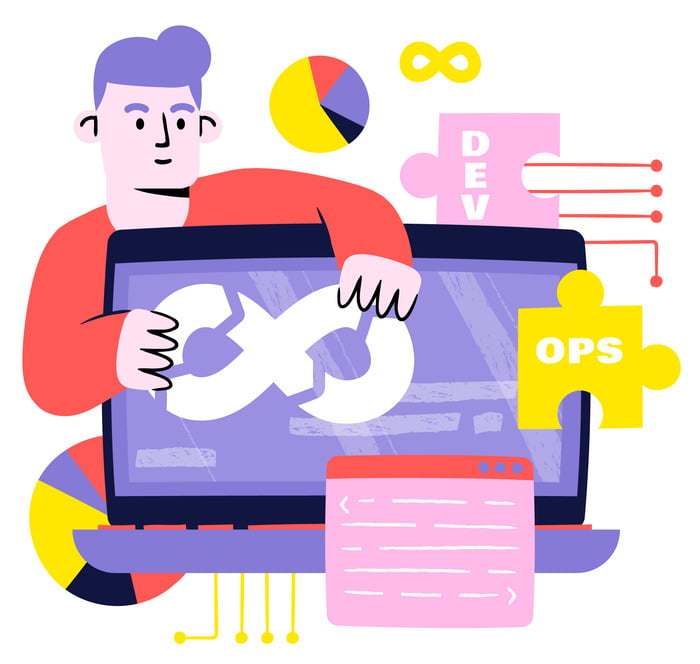Introduction:
In today’s technology-driven world, businesses rely on their IT infrastructure to secure smooth business operations, increase productivity, and deliver excellent customer experiences. IT Operations Management (ITOM Tool) is vital in maintaining these complex IT systems’ performance, availability, and reliability. One approach that has gained significant popularity in recent years is Software-as-a-Service (SaaS) IT Operations Management, which offers diversified benefits to businesses seeking efficient and cost-effective solutions.
Related article: ITOM as the Gateway to AIOps and DEX
An Overview of SaaS ITOM Tool
SaaS ITOM refers to managing IT infrastructure and services using cloud-based platforms that are accessible remotely. It enables businesses to consolidate data from diverse IT systems into centralized and user-friendly platforms. This improves the communication channels among IT systems and reduces downtime, leading to increased operational efficiency.

IT Operations Management is vital for business operations as it results in smooth functioning, performance, and availability of the infrastructure. By effectively managing and optimizing various components like servers, networks, databases, and applications, It identifies and resolves the issue, resulting in increased revenue. ITOM also significantly affects cost optimization through resource utilization monitoring, efficient processes, and automation. However, ITOM contributes to risk management and cyber-security, ensuring compliance and protecting businesses from potential threats. Overall, effective ITOM implementation leads to improved operational efficiency, increased user experience, and a competitive edge in the market.
Current Challenges of IT Operations Management
Despite many benefits, ITOM faces challenges in the rapidly evolving IT Infrastructure, scalability, data management, security, automation, and optimization. These include handling data, addressing security risks, implementing automation, optimizing cost, and more. Some of the current difficulties in ITOM include:

- The complexity of IT infrastructure: Managing diverse technologies and systems can be intricate, making it challenging to ensure seamless coordination. The lack of communication hampers real-time information exchange and inhibits data sharing, leading to delayed problem resolutions and limited insights.
- Poor visibility and control over IT operations: Many organizations need more visibility over their IT infrastructure services. This leads to inefficiencies and difficulties in managing performance and addressing issues promptly. It results in downtime and decreased productivity.
- Seamless remote access to infrastructure: With the rise of remote work, business enterprises need secure and reliable access to critical IT resources. However, enabling seamless remote access while maintaining data security and preventing unauthorized access can be complex.
- Security and Governance issues: Securing IT infrastructure services, particularly in the cloud, presents ongoing challenges in IT Operations Management. The complexity of ensuring the security of cloud-based systems introduces the risk of data breaches and compromised systems.
Addressing these challenges requires organizations to invest in advanced ITOM solutions and establish effective communication channels between systems. By tackling these challenges, organizations can enhance their IT operations’ efficiency, reliability, and security.
How Does Next-Generation Technology Help Overcome ITOM Challenges?
Next-generation technology is crucial in overcoming IT Operations Management (ITOM) challenges by providing innovative solutions and capabilities. Let’s dive into different aspects of technologies that help address ITOM challenges:
AI and Machine Learning in ITOM
AI and Machine Learning technologies enable intelligent automation and data-driven decision-making in ITOM. With the help of these technologies, we can analyze vast amounts of data, detect patterns, and identify potential issues in real-time. AI-based ITOM solutions can automate routine tasks, predict system failures, and optimize resource allocation. By leveraging AI and machine learning, ITOM professionals can enhance operational efficiency, actively address issues, and reduce downtime.
IoT and ITOM
The Internet of Things (IoT) connects devices, sensors, and systems to the Internet, generating massive data. ITOM can leverage IoT technologies to gain real-time insights into the performance and health of IT infrastructure components. By collecting and analyzing IoT data, ITOM professionals can monitor equipment status, identify potential bottlenecks, and trigger automated maintenance actions. IoT-based ITOM improves visibility, enhances proactive management, and enables predictive maintenance.
Cloud-native ITOM
Cloud-native (Software-as-a-Service) ITOM solutions are designed specifically for cloud environments, offering scalability, agility, and flexibility. These solutions utilize the native capabilities of cloud platforms, such as auto-scaling and dynamic resource allocation. Cloud-native ITOM provides centralized management, monitoring, and automation of cloud-based infrastructure and services. It simplifies the complexity of managing diverse cloud resources and offers seamless integration with cloud-native tools and services.
DevOps and ITOM
DevOps practices focus on collaboration and integration between development and operations teams to streamline software delivery and infrastructure management. DevOps principles, such as automation, continuous integration, and continuous deployment, align well with ITOM goals.

By implementing DevOps practices, ITOM teams can improve communication, accelerate deployment cycles, and enhance agility in managing IT infrastructure. DevOps and ITOM integration enable faster problem resolution, efficient resource utilization, and more reliable systems.
Next-generation technologies such as AI, machine learning, IoT, cloud-native ITOM, and DevOps help overcome ITOM challenges. They provide advanced analytics, automation, real-time insights, and streamlined management of complex IT environments. Embracing these technologies enhances operational efficiency, reduces downtime, improves decision-making, and optimizes IT infrastructure.
Related blog: Will SaaS IT Operation Management Ever Rule the World?
Conclusion
The rise of the SaaS ITOM trend offers easy accessibility, scalability, and cost-effectiveness for organizations. It improves communication, enhances visibility, and optimizes IT infrastructure. Integrating AI and machine learning enhances capabilities like predictive analytics and intelligent automation. Embracing SaaS ITOM helps streamline operations, improve efficiency, and stay competitive in the digital landscape. Prospects for SaaS ITOM remain promising for effective IT infrastructure management.
Prospects
SaaS ITOM is a growing trend that offers accessibility, scalability, and cost-effectiveness. It centralizes IT operations through cloud-based platforms, improving visibility and communication. Integrating AI and machine learning in SaaS IT Operations Management enables predictive analytic and intelligent automation. Advancements in IoT and edge computing further enhance ITOM visibility and control. Embracing SaaS ITOM and staying updated on emerging technologies will position organizations to manage their IT infrastructure successfully in the future.


















